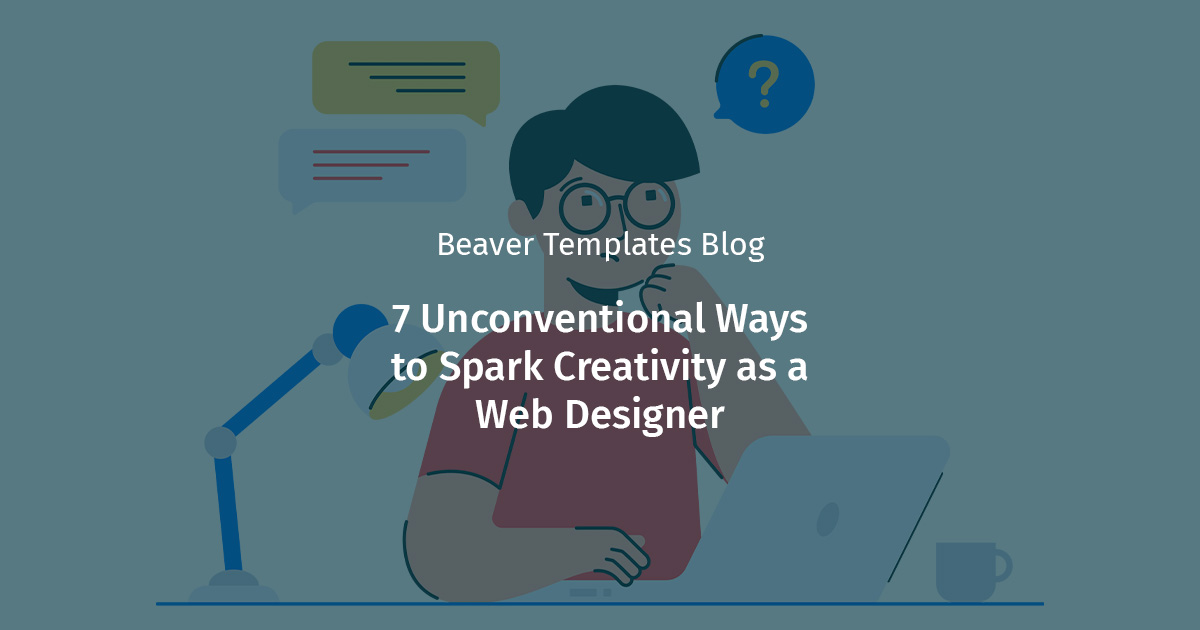Whether you’re a seasoned web design pro or a freelancer juggling multiple projects, creative blocks happen to the best of us. Staring at a blank canvas, knowing your next big idea should be just one click away… but it’s not. This frustration is all too common. When traditional brainstorming just isn’t cutting it, it’s time to shake things up.
In this post, we’ll explore 7 unconventional ways to spark creativity, especially tailored for web designers looking to break through design ruts and generate fresh ideas for client projects, templates, or personal sites.
7 Creative Web Design Ideas to Spark Creativity
1. Design a Website for a Fictional Business
When the pressure of client requirements disappears, the possibilities expand. Try creating a mock website for a fictional business or an imaginary brand. Think: a potion shop run by forest witches, a robot pet adoption agency, or a time-travel tourism company.
Why it works: With no limits on structure, tone, or branding guidelines, you’re free to explore wild layouts, bold typography, and creative web design ideas you’d never try on a real client.
As an added bonus, some of your most experimental ideas may turn into reusable elements for future templates.
2. Use a Random Word Generator for Inspiration
Struggling with where to start? Open a random word generator and write down the first 3–5 words that appear. Use them as prompts to create a mood board, color palette, or homepage concept.
Let’s say your words are “gravity,” “sapphire,” and “reflection.” That might inspire a sleek, modern design with deep blue tones, parallax scrolling, and mirrored imagery.
Why it works: Constraints are creative fuel. Random inputs push your brain into unexpected directions, often leading to fresh web design ideas that stand out.
3. Browse Non-Web Design Mediums
Instead of scrolling through portfolios on Dribbble or Behance, look elsewhere. Try flipping through interior design magazines, watching stop-motion animation, or checking out experimental architecture.
Why it works: Creativity often flows sideways. Pulling from visual mediums outside your niche forces you to reinterpret what’s possible on the web.
For example, the layout of a modern kitchen can inspire a grid-based homepage. A vintage poster may lead to a retro landing page design.
4. Limit Yourself to One Color and One Font
Sometimes, too much freedom can lead to decision paralysis. Give yourself a strict creative limitation: build a layout using only one font and one color (in different shades or opacities).
Why it works: This minimalist constraint forces you to think creatively about space, layout, and contrast. Many web design ideas flourish under boundaries, not despite them.
Try applying this exercise to one of our free Beaver Builder templates and see how the layout changes under a tight visual system.
5. Recreate a Favorite Childhood Memory as a Website
Think back to a vivid moment in your life. Something like your first concert, a road trip with friends, or the feeling of walking into a candy store as a kid. Then challenge yourself to turn that emotion into a website homepage.
Include visual motifs, color schemes, textures, or micro-animations that capture the memory’s vibe.
Why it works: Emotional design taps into the power of storytelling, which in turn creates meaningful experiences. You’ll likely produce a more original and connected design than something inspired by trends.
6. Use AI as a Creative Prompt, Not a Replacement
Tools like ChatGPT, Midjourney, or Galileo AI can serve as idea starters when used intentionally and creatively. Ask an AI to describe a futuristic coffee shop website or suggest web design ideas based on nature-inspired patterns.
Then translate the ideas into your own language, sketches, or web design prototypes.
Why it works: Using AI in this way isn’t about copying; it’s about accelerating ideation. Using it to explore visual metaphors or layout strategies can unlock directions you wouldn’t have found on your own.
7. Take a Template, and Break It
Sometimes creativity isn’t about starting from scratch. Grab a premade Beaver Builder template and intentionally break the design.
Change the color scheme to something jarring. Move the header below the hero image. Replace photos with textures. Reverse the layout hierarchy.
Why it works: Editing a finished design in unexpected ways teaches you how design systems work and how to push them beyond default conventions. You’ll often uncover a surprising twist that leads to something new and useful.
Start with one of our Beaver Builder templates and give it your own experimental twist.
Embrace Play, Not Perfection
The next time you hit a creative wall, remember that play is one of the fastest paths to progress. The more you explore, bend the rules, and experiment outside of your usual process, the faster you’ll find your spark again.
Web design is part logic and part magic. When you lean into the weird, you’re more likely to build something truly original.
So break the template. Follow the random prompt. And trust that the spark of creativity is just one strange idea away.
Check Out Our Collection of Premium Beaver Builder Templates
Looking for a creative starting point? Browse our collection of ready-to-edit Beaver Builder website templates, designed to spark inspiration and build faster.


